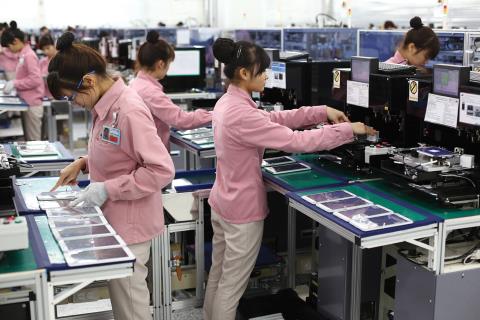|
Samsung pledges $2.5 billion
FDI, asks for more investment incentives
Samsung Display Vietnam (SDV) has expressed
its willingness to invest $2.5 billion more in Bac Ninh province, thus
raising total investment scale of the project in the locality to $6.5
billion. However, its claims for investment incentives have raised
controversy.
 Samsung wants its operational project in Bac Ninh province to enjoy the preferential policy offered to ‘large scale projects’ and the investment incentives for 'high technology project'. It also wants the additional investment capital of $2.5 billion to enjoy corporate income tax incentives as now applied. Meanwhile, the Bac Ninh provincial authorities have proposed to the Prime Minister to retain the additional incentives (SDV can enjoy preferential corporate income tax rate of 50 percent for three more years for its project in Yen Phong Industrial Zone after it shifts from ‘high-technology project’ to ‘large scale project’). Vu Duc Quyet, director of the Bac Ninh provincial Industry and Trade Department, said since this case does not come under the local authorities, Bac Ninh will have to report to the Prime Minister for the final decision.
According to
Nguyen Hong Nga from the Economics & Law University, it is necessary to
clarify that the promised $2.5 billion is ‘additional investment capital’. It
will be unreasonable to add the newly pledged sum of capital of $2.5 billion
and the $4 billion for the operational project to calculate tax incentives.
Nga believes that Samsung can enjoy investment incentives for its operational project until 2019. As for the new project capitalized at $2.5 billion, it will be able to enjoy investment incentives from 2018 to 2022. This means that the two projects will be treated separately. Agreeing with Nga, Bui Ngoc Son from the Institute of World Economics and Politics, said it is necessary to refer to current laws about ‘large scale projects’. Some investors in the past committed $10 billion with disbursement within five years. But they only disbursed money in the first year or two and then stopped disbursement due to financial difficulties. The problem was that they still enjoyed investment incentives in the first two years offered for a $10 billion project. Son noted that Samsung has received many investment incentives from the government of Vietnam and local authorities. Meanwhile, what Vietnam has received is just jobs for local residents. “Samsung reports the export turnover of several billions of dollar a year, but Vietnam can pocket some tens of millions of dollars only,” he said. Meanwhile, Nga said it would be better not to consider Samsung’s proposal for incentives, at least for the next five years, because Vietnam now prioritizes to attract investment into high-tech sector.
Exports
revenues from the two plants of Samsung Electronics Viet Nam (SEV) in Bac
Ninh Province and Samsung Electronics Viet Nam – Thai Nguyen (SEVT) in Thai
Nguyen Province were estimated to reach US$35 billion in 2016, posting a 7
percent year-on-year increase despite the impact from Note 7 incident.
Thanh Mai, VietNamNet
Bridge
|
Thứ Tư, 1 tháng 2, 2017
Đăng ký:
Đăng Nhận xét (Atom)
Không có nhận xét nào:
Đăng nhận xét